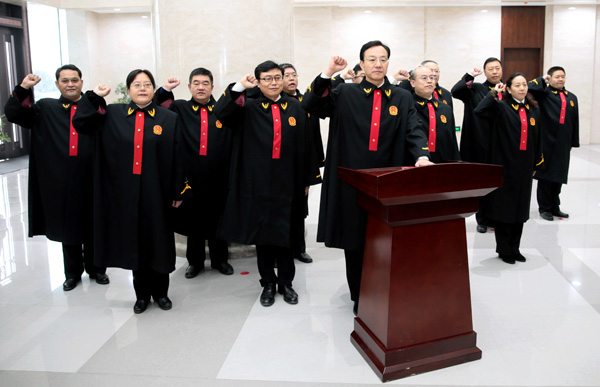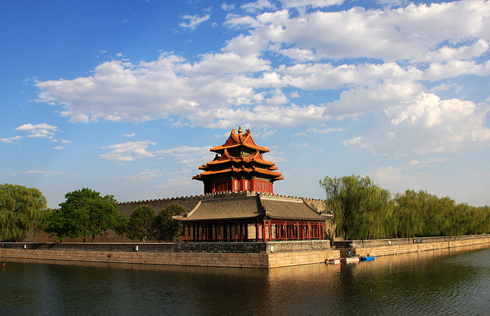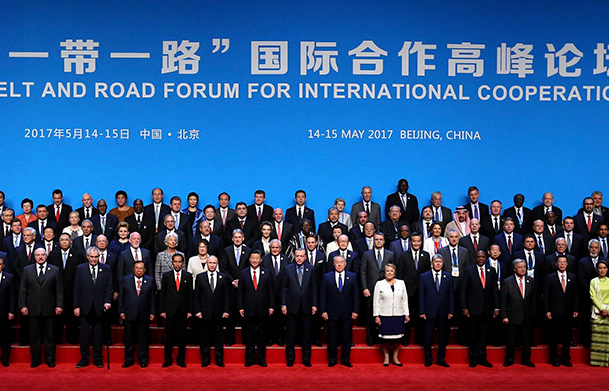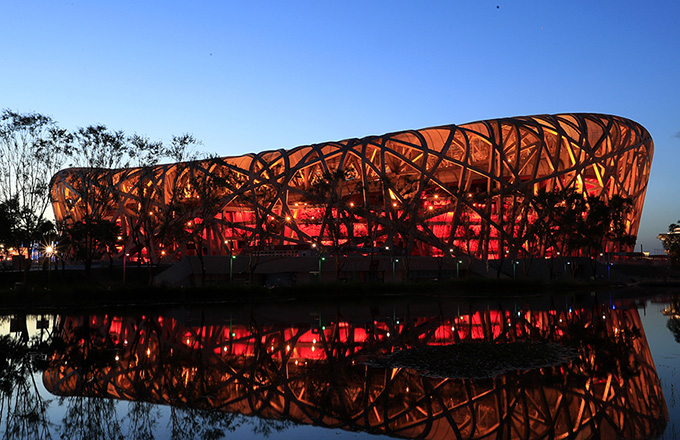Circuit courts bring convenience and speed
 |
|
Judges at the Supreme People's Court's Sixth Circuit Court in Xi'an, Shaanxi province, swear an oath of allegiance. [Photo/Xinhua] |
Regional branches of the Supreme People's Court are providing greater flexibility and changing the way litigants and legal professionals approach cases, as Cao Yin reports.
For many years, Huang Sizhou, a lawyer in Shenzhen, in the southern province of Guangdong, frequently traveled to Beijing in the north of the country to attend appeal hearings at the Supreme People's Court (the country's top legal chamber). Sometimes, he spent days away from his family.
Now, Huang's traveling days are over. "The Supreme People's Court has established a circuit court in Guangdong, which means I can help clients resolve disputes and have face-to-face talks with judges from the top court without leaving my hometown," said Huang, who specializes in civil and commercial cases.
The first two circuit courts were opened in 2015 to enforce judicial reforms, improve efficiency and provide litigants with better legal services.
The First Circuit Court, in Shenzhen, is responsible for cases from the provinces of Guangdong and Hainan, and the Guangxi Zhuang autonomous region, while the Second Circuit Court, in Shenyang, capital of Liaoning province, oversees disputes in the northeastern provinces of Liaoning, Jilin and Heilongjiang.
As branches of the country's top legal tribunal, the two courts are further reinforcing the rule of law, which has been promoted by the central leadership since 2014.
Statistics published in March show that in the past two years, the two branches shared 4,721 cases, 4,573 of which had been concluded. Before the circuit courts were established, those cases would have been added to the work of the Supreme People's Court in Beijing.
The success of the move resulted in four more circuit courts being established at the end of last year: in Zhengzhou, Henan province; Nanjing, Jiangsu province; Chongqing municipality; and Xi'an, Shaanxi province.
"It means the top court's arms have extended across the country," said Xu Jiaxin, director of the Supreme People's Court's political department.
He added that the new courts aim to further narrow the gap between the top court and the public by helping to resolve disputes without people having to travel to Beijing: "They are also the key to unifying standards for case hearings to ensure litigants receive considered, high-quality verdicts, and improving court efficiency."


















